Topical microbicides for preventing sexually transmitted infections
- PMID: 33719075
- PMCID: PMC8092571
- DOI: 10.1002/14651858.CD007961.pub3
Topical microbicides for preventing sexually transmitted infections
Abstract
Background: This is a updated version of our Cochrane Review published in Issue 6, 2012. Sexually-transmitted infections (STIs) continue to rise worldwide, imposing an enormous morbidity and mortality burden. Effective prevention strategies, including microbicides, are needed to achieve the goals of the World Heath Organization (WHO) global strategy for the prevention and control of these infections.
Objectives: To determine the effectiveness and safety of topical microbicides for preventing acquisition of STIs, including HIV.
Search methods: We undertook a comprehensive search of the Cochrane Central Register of Controlled Trials (CENTRAL), MEDLINE, Embase, LILACS, CLIB, Web of Science, ClinicalTrials.gov, WHO International Clinical Trials Registry Platform, and reference lists of relevant articles up to August 2020. In addition, we contacted relevant organisations and experts.
Selection criteria: We included randomised controlled trials of vaginal microbicides compared to placebo (except for nonoxynol-9 because it is covered in related Cochrane Reviews). Eligible participants were sexually-active non-pregnant, WSM and MSM, who had no laboratory confirmed STIs.
Data collection and analysis: Two review authors independently screened and selected studies, extracted data, and assessed risks of bias in duplicate, resolving differences by consensus. We conducted a fixed-effect meta-analysis, stratified by type of microbicide, and assessed the certainty of the evidence using the GRADE approach.
Main results: We included eight trials from the earlier version of the review and four new trials, i.e. a total of 12 trials with 32,464 participants (all WSM). We did not find any eligible study that enrolled MSM or reported fungal STI as an outcome. We have no study awaiting assessment. All 12 trials were conducted in sub-Saharan Africa, with one having a study site in the USA, and another having a site in India. Vaginal microbicides tested were BufferGel and PRO 2000 (1 trial, 3101 women), Carraguard (1 trial, 6202 women), cellulose sulphate (2 trials, 3069 women), dapivirine (2 trials, 4588 women), PRO 2000 (1 trial, 9385 women), C31G (SAVVY) (2 trials, 4295 women), and tenofovir (3 trials, 4958 women). All microbicides were compared to placebo and all trials had low risk of bias. Dapivirine probably reduces the risk of acquiring HIV infection: risk ratio (RR) 0.71, (95% confidence interval (CI) 0.57 to 0.89, I2 = 0%, 2 trials, 4588 women; moderate-certainty evidence). The other microbicides may result in little to no difference in the risk of acquiring HIV (low-certainty evidence); including tenofovir (RR 0.83, 95% CI 0.68 to 1.02, cellulose sulphate (RR 1.20, 95% CI 0.74 to 1.95, BufferGel (RR 1.05, 95% CI 0.73 to 1.52), Carraguard (RR 0.89, 95% CI 0.71 to 1.11), PRO 2000 (RR 0.93, 95% CI 0.77 to 1.14), and SAVVY (RR 1.38, 95% CI 0.79 to 2.41). Existing evidence suggests that cellulose sulphate (RR 0.99, 95% CI 0.37 to 2.62, 1 trial, 1425 women), and PRO 2000 (RR 0.95, 95% CI 0.73 to 1.23) may result in little to no difference in the risk of getting herpes simplex virus type 2 infection (low-certainty evidence). Two studies reported data on tenofovir's effect on this virus. One suggested that tenofovir may reduce the risk (RR 0.55, 95% CI 0.36 to 0.82; 224 participants) while the other did not find evidence of an effect (RR 0.94, 95% CI 0.85 to 1.03; 1003 participants). We have not reported the pooled result because of substantial heterogeneity of effect between the two studies (l2 = 85%). The evidence also suggests that dapivirine (RR 1.70, 95% CI 0.63 to 4.59), tenofovir (RR 1.27, 95% CI 0.58 to 2.78), cellulose sulphate (RR 0.69, 95% CI 0.26 to 1.81), and (Carraguard (RR 1.07, 95% CI 0.75 to 1.52) may have little or no effect on the risk of acquiring syphilis (low-certainty evidence). In addition, dapivirine (RR 0.97, 95% CI 0.89 to 1.07), tenofovir (RR 0.90, 95% CI 0.71 to 1.13), cellulose sulphate (RR 0.70, 95% CI 0.49 to 0.99), BufferGel (RR 0.97, 95% CI 0.65 to 1.45), Carraguard (RR 0.96, 95% CI 0.83 to 1.12), and PRO 2000 (RR 1.01, 95% CI 0.84 to 1.22) may result in little to no difference in the risk of acquiring chlamydia infection (low-certainty evidence). The evidence also suggests that current topical microbicides may not have an effect on the risk of acquiring gonorrhoea, condyloma acuminatum, trichomoniasis, or human papillomavirus infection (low-certainty evidence). Microbicide use in the 12 trials, compared to placebo, did not lead to any difference in adverse event rates. No study reported on acceptability of the intervention. AUTHORS' CONCLUSIONS: Current evidence shows that vaginal dapivirine microbicide probably reduces HIV acquisition in women who have sex with men. Other types of vaginal microbicides have not shown evidence of an effect on acquisition of STIs, including HIV. Further research should continue on the development and testing of new microbicides.
Copyright © 2021 The Cochrane Collaboration. Published by John Wiley & Sons, Ltd.
Conflict of interest statement
JO: none known
PO: none known
PGM: none known
CSW: none known
Figures

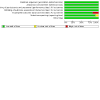
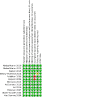
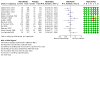
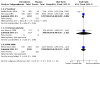



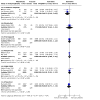
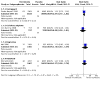
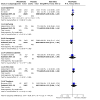

Update of
-
Topical microbicides for prevention of sexually transmitted infections.Cochrane Database Syst Rev. 2012 Jun 13;(6):CD007961. doi: 10.1002/14651858.CD007961.pub2. Cochrane Database Syst Rev. 2012. Update in: Cochrane Database Syst Rev. 2021 Mar 13;3:CD007961. doi: 10.1002/14651858.CD007961.pub3. PMID: 22696373 Updated.
Similar articles
-
Topical microbicides for prevention of sexually transmitted infections.Cochrane Database Syst Rev. 2012 Jun 13;(6):CD007961. doi: 10.1002/14651858.CD007961.pub2. Cochrane Database Syst Rev. 2012. Update in: Cochrane Database Syst Rev. 2021 Mar 13;3:CD007961. doi: 10.1002/14651858.CD007961.pub3. PMID: 22696373 Updated.
-
Vaginal microbicides for reducing the risk of sexual acquisition of HIV infection in women: systematic review and meta-analysis.BMC Infect Dis. 2012 Nov 6;12:289. doi: 10.1186/1471-2334-12-289. BMC Infect Dis. 2012. PMID: 23130761 Free PMC article.
-
Effectiveness of vaginal microbicides in preventing HIV transmission.Trop Med Int Health. 2020 Jul;25(7):790-802. doi: 10.1111/tmi.13401. Epub 2020 May 13. Trop Med Int Health. 2020. PMID: 32306503
-
HPTN 035 phase II/IIb randomised safety and effectiveness study of the vaginal microbicides BufferGel and 0.5% PRO 2000 for the prevention of sexually transmitted infections in women.Sex Transm Infect. 2014 Aug;90(5):363-9. doi: 10.1136/sextrans-2014-051537. Epub 2014 Jun 4. Sex Transm Infect. 2014. PMID: 24898857 Free PMC article. Clinical Trial.
-
Clinical development of microbicides for the prevention of HIV infection.Curr Pharm Des. 2004;10(3):315-36. doi: 10.2174/1381612043386374. Curr Pharm Des. 2004. PMID: 14754390 Review.
Cited by
-
Do vaginal microbicides reduce the risk of HIV acquisition in women?Pan Afr Med J. 2022 Oct 24;43:96. doi: 10.11604/pamj.2022.43.96.30227. eCollection 2022. Pan Afr Med J. 2022. PMID: 36660088 Free PMC article.
-
Associations between intravaginal practices and incidence of sexually transmitted infections and bacterial vaginosis among women enrolled in the dapivirine vaginal ring trial (The Ring Study) in southwestern Uganda: a retrospective secondary analysis.BMJ Open. 2024 Apr 8;14(4):e079497. doi: 10.1136/bmjopen-2023-079497. BMJ Open. 2024. PMID: 38589266 Free PMC article. Clinical Trial.
-
Genital Immune Cell Activation and Tenofovir Gel Efficacy: A Case-Control Study.Clin Infect Dis. 2022 Sep 29;75(6):1088-1091. doi: 10.1093/cid/ciac115. Clin Infect Dis. 2022. PMID: 35142337 Free PMC article.
-
Addressing HIV Misconceptions among Heterosexual Black Men and Communities in Ontario.Healthcare (Basel). 2023 Mar 31;11(7):997. doi: 10.3390/healthcare11070997. Healthcare (Basel). 2023. PMID: 37046924 Free PMC article.
References
References to studies included in this review
Abdool Karim 2010 {published data only}
-
- Keller DM. AIDS 2010, XVIII International AIDS Conference: Tenofovir vaginal gel first microbicide to prevent HIV, HSV infections. Medscape Medical News July 2010.
Abdool Karim 2011 {published data only}
-
- Guffey MB, Richardson B, Husnik M, Makanani B, Chilongozi D, Yu E, et al. HPTN 035 Phase II/IIb Randomized safety and effectiveness study of the vaginal microbicides BufferGel and 0.5% PRO 2000 for the prevention of sexually transmitted infections in women. Sexually Transmitted Infections 2014;90(5):1-15. - PMC - PubMed
Baeten 2016 {published data only}
-
- MTN 2016. Dapivirine vaginal ring helped protect women against HIV in ASPIRE Phase lll trial. Media release.
Delany‐Moretlwe 2018 {published data only}
-
- Delany-Moretlwe S, Lombard C, Baron D, Bekker LG, Nkala B, Ahmed K et al. Tenofovir 1% vaginal gel for prevention of HIV-1 infection in women in South Africa (FACTS-001): a phase 3, randomised,double-blind, placebo-controlled trial. The Lancet Infectious Diseases 2018;18(11):1241-50. - PubMed
-
- Rees HS, Sinead A, Delany- Moretiwa S, Baron D, Pachia R, et al. In: FACTS 001 Phase III Trial of Pericoital Tenofovir 1% Gel for HIV Prevention in Women.The 22nd Conference on Retroviruses and Opportunistic Infections;2015 Feb 23-26; Seattle Washington. 2015.
Feldblum 2008 {published data only}
Halpern 2008 {published data only}
Marrazzo 2015 {published data only}
McCormack 2010 {published data only}
Nel 2016 {published data only}
-
- Nel A, Van Niekerk N, Kapiga S, Bekker LG, Gama C, Gill K. Safety and efficacy of a dapivirine vaginal ring for HIV prevention in women. New England Journal of Medicine 2016;375(22):2133-45. - PubMed
Peterson 2007 {published data only}
Skoler‐Karpoff 2008 {published data only}
-
- Marais D, Gawarecki D, Allan B, Ahmed K, Altini L, Cassim N, et al. The effectiveness of Carraguard, a vaginal microbicide, in protecting women against high-risk human papillomavirus infection. Antiviral Therapy 2011;16(8):1219-26. - PubMed
-
- Skoler-Karpoff S, Ramjee G, Ahmed K, Altini L, Plagianos MG, Friedland B, et al. Efficacy of Carraguard for prevention of HIV infection in women in South Africa: a randomised, double-blind, placebo-controlled trial. Lancet 2008;372(9654):1977-87. - PubMed
Van Damme 2008 {published data only}
-
- Van Damme L, Govinden R, Mirembe FM, Guédou F, Solomon S, Becker ML, et al. Lack of effectiveness of cellulose sulphate gel for the prevention of vaginal HIV transmission. New England Journal of Medicine 2008;359(5):463-73. - PubMed
References to studies excluded from this review
Artz 2005 {published data only}
-
- Artz L, Macaluso M, Meinzen-Derr J, Kelaghan J, Austin H, Fleenor M, et al. A randomised trial of clinician-delivered interventions promoting barrier contraception for sexually transmitted disease prevention. Sexually Transmitted Diseases 2005;32:672-9. - PubMed
Barbone 1990 {published data only}
-
- Barbone F, Austin H, Louv WC, Alexander WJ. A follow-up study of methods of contraception, sexual activity, and rates of trichomoniasis, candidiasis, and bacterial vaginosis. American Journal of Obstetrics and Gynaecology 1990;163(2):510-4. - PubMed
Cutler 1997 {published data only}
-
- Cutler JC, Singh B, Carpenter U, Nickens O, Scarola A, Sussman N, et al. Vaginal contraceptives as prophylaxis against gonorrhoeaand other sexually transmissible diseases. Advances in Planned Parenthood 1977;12:45-56.
Ettiègne‐Traoré 1997 {published data only}
-
- Ettiègne-Traoré V, Ghys PD, Van Damme L, N'Krumah M, Maïga A, Tiémelé A, et al. Acceptability and feasibility of a clinical trial to assess the efficacy of a microbicide-containing vaginal gel to prevent HIV infection among female sex workers in Abidjan, Cote d'Ivoire. AIDS 1997;11(13):1660-2. - PubMed
Kreiss 1992 {published data only}
-
- Kreiss J, Ngugi E, Holmes KK, Ndinya-Achola J, Waiyaki P, Roberts PL, et al. Efficacy of nonoxynol-9 contraceptive sponge use in preventing heterosexual acquisition of HIV in Nairobi prostitutes. JAMA 1992;268(4):477-82. - PubMed
Louv 1998 {published data only}
-
- Louv WC, Austin H, Alexander WJ, Stagno S, Cheeks J. A clinical trial of nonoxynol-9 for preventing gonococcal and chlamydial infection. Journal of Infectious Diseases 1988;158(3):518-23. - PubMed
Niruthisard 1992 {published data only}
-
- Niruthisard S, Roddy RE, Chutivongse S. Use of nonoxynol-9 and reduction in rate of gonococcal and chlamydial cervical infections. Lancet 1992;339(8806):1371-5. - PubMed
Rendon 1980 {published data only}
-
- Rendon AL, Covarrubias J, McCarney KE, Marion-Landais G, Luna del Villar J. A controlled comparative study of phenyl mercuric acetate, nonoxynol-9 and placebo vaginal suppositories as prophylactic agents against gonorrhoea. Current Therapeutic Research 1980;27:780-3.
Roddy 1988 {published data only}
-
- Roddy RE, Zekeng L, Ryan KA, Tamoufé U, Weir SS, Wong EL. A controlled trial of nonoxynol-9 film to reduce male to female transmission of sexually transmitted diseases. New England Journal of Medicine 1998;339(8):504–10. - PubMed
Rosenberg 1987a {published data only}
-
- Rosenberg MJ, Feldblum PJ, Rojanapithayakorn W, Sawasdivorn W. The contraceptive sponge's protection against Chlamydia trachomatis and Neisseria gonorrhoeae. Sexually Transmitted Diseases 1987;14(3):147-52. - PubMed
Rosenberg 1987b {published data only}
-
- Rosenberg MJ, Rojanapithayakorn W, Feldblum PJ, Higgins JE. Effect of the contraceptive sponge on chlamydial infection, gonorrhoea, and candidiasis - a comparative clinical trial. JAMA 1987;257(17):780–3. - PubMed
Sacks 1990 {published data only}
-
- Sacks SL, Varner TL, Davies KS, Rekart ML, Stiver HG, DeLong ER, et al. Randomised, double-blind,placebo-controlled, patient initiated study of topical high and low-dose interferon-alpha with nonoxynol-9 in the treatment of recurrent genital herpes. Journal of Infectious Diseases 1990;161:692–8. - PubMed
Van der Straten 2007 {published data only}
-
- Van der Straten A, Napierala S, Cheng H, Mauck C, Depineres T, Dhlakama P, et al. A randomised controlled safety trial of the diaphragm and cellulose sulphate microbicide gel in sexually active women in Zimbabwe. Contraception 2007;76:389-99. - PubMed
Zaneveld 2002 {published data only}
-
- Zaneveld LJ, Anderson RA, Diao XH, Waller DP, Chany C, Feathergill K, et al. Use of mandelic acid condensation polymer (SAMMA), a new antimicrobial contraceptive agent, for vaginal prophylaxis. Fertility and Sterility 2002;78(5):1107-15. - PubMed
Additional references
Abdullah 2002
Adimora 2010
Adler 2004
-
- Adler M, Cowan, F, French P, Mitchell L, Richens J. ABC of Sexually Transmitted Infections, Fifth Edition. BMJ Publishig Group, 2004.
Amin 2013
-
- Amin A, Garcia Moreno C. Addressing gender-based violence to reduce risk of STI and HIV. Sexually Transmitted Infections. 2013;89:A8.
Balshem 2011
-
- Balshem B, Helfand M, Schünemann HJ, Oxman AD, Kunz R, Broze J, et al. GRADE guidelines: 3. Rating the quality of evidence. Journal of Clinical Epidemiology 2011;64(4):401-6. - PubMed
Buckheit 2010
CDC 2015
-
- CDC 2015. Sexually transmitted diseases treatment guidelines, 2015. www.cdc.gov/mmwr/preview/mmwrhtml/rr6403a1.htm.
Crosby 2005
-
- Crosby R, Yarber WL, Sanders SA, Graham CA. Condom discomfort and associated problems with their use among university students. Journal of American College Health 2005;54(3):143-7. - PubMed
Cutler 2008
Egger 1997a
-
- Egger M, Zellweger-Zahner T, Schneider M, Junker C, Lengeler C, Antes G. Language bias in randomised controlled trials published in English and German. Lancet 1997;350:326-9. - PubMed
Egger 1997b
Essien 2005
Gaitán‐Duarte 2013
-
- Gaitán-Duarte HG, Rodríguez-Hernández AE, Arévalo-Rodríguez I, Angel-Müller E, López-Ramos HE, Estrada-Mesa, JS, et al. Clinical practice guideline for syndromic management of patients with sexually transmitted infections and other genital tract infections. Revista Colombia Obstetrics and Gynecology 2013;64:126-77.
Garg 2009
-
- Garg AB, Nuttall J, Romano J. The future of HIV microbicides: challenges and opportunities. Antiviral Chemistry & Chemotherapy 2009;19(4):143-50. - PubMed
Gotlieb 2014
Guyatt 2011
-
- Guyatt G, Oxman AD, Akl EA, Kunz R, Vist G, Brozek J, et al. GRADE guidelines: 1. introduction - GRADE evidence profiles and summary of findings tables. Journal of Clinical Epidemiology 2011;64(4):383-94. - PubMed
Guyatt 2013
-
- Guyatt G, Oxman AD, Sultan S, et al. GRADE guidelines: 11. Making an overall rating of confidence in effect estimates for a single outcome and for all outcomes. J Clin Epidemiol 2013;66(2):151-157. - PubMed
Han 2009
Harbord 2006
-
- Harbord RM, Egger M, Sterne JA. A modified test for small-study effects in meta-analyses of controlled trials with binary endpoints. Statistics in Medicine 2006;25.(20):3443-57. - PubMed
Higgins 2019
-
- Higgins JPT, Thomas J, (editors). Cochrane Handbook for Systematic Reviews of Interventions version 6.0 (updated August 2019). Cochrane, 2019. Available from www.training.cochrane.org/handbook.
Higgins 2020
-
- Higgins JPT, Thomas J, Chandler J, Cumpston M, Li T, Page MJ, Welch VA (editors). Cochrane Handbook for Systematic Reviews of Interventions version 6.1 (updated September 2020). Cochrane, 2020. Available from www.training.cochrane.org/handbook.
Keller 2012
Klasse 2008
-
- Klasse PJ, Shattock R, Moore JP. Antiretroviral drug-based microbicides to prevent HIV-1 sexual transmission. Annual Review of Medicine 2008;59:455-71. - PubMed
Kumar 2006
-
- Kumar GA, Dandona R, Gutierrez JP, McPherson S, Bertozzi SM, Dandona L. Access to condoms for female sex workers in Andhra Pradesh. National Medical Journal of India 2006;19(6):306-12. - PubMed
Lopez 2016
Matson 2011
Mayaud 2001
-
- Mayaud P, McComick D. The changing face of HIV and AIDS. British Medical Bulletin 2001;58:129-53. - PubMed
Moher 1996
-
- Moher D, Fortin P, Jada AR, Juni P, Klassen T, Le Lorier J, et al. Completeness of reporting of trials published in languages other than English: implications for conduct and reporting of systematic reviews. Lancet 1996;347:363-6. - PubMed
Musekiwa 2020
-
- Musekiwa A, Fernando MB, Abariga SA. Effectiveness of vaginal microbicides in preventing HIVtransmission. Tropical medicine and international health 2020;25(7):790-802. - PubMed
Newman 2015
Nunes 2014
-
- Nunes R, Sarmento B, Das Neves J. Formulation and delivery of anti-HIV rectal microbicides: advances and challenges. Journal of Control Release 2014;194:278-94. - PubMed
Nuttall 2010
-
- Nuttall J. Microbicides in the prevention of HIV infection: current status and future directions. Drugs 2010;70(10):1231-43. - PubMed
Oakeshott 2010
Ortayli 2014
-
- Ortayli N, Ringheim K, Collins L, Sladden T. Sexually transmitted infections: progress and challenges since the 1994 International Conference on Population and Development (ICPD). Contraception 2014;90:(6 Suppl):S22-31. - PubMed
RevMan 2014 [Computer program]
-
- Nordic Cochrane Centre, The Cochrane Collaboration Review Manager 5 (RevMan 5). Version 5.3. Copenhagen: Nordic Cochrane Centre, The Cochrane Collaboration, 2014.
Sarkar 2008
-
- Sarkar NN. Barriers to condom use. European Journal of Contraception and Reprodive Health Care 2008;13(2):114-22. - PubMed
Singh 2014
Smriti 2012
Sonkar 2016
Sonkar 2017
Thomsen 2004
Trollope‐Kumar 2006
-
- Trollope-Kumar K, Guyatt G. Syndromic approach for treatment of STIs: time for a change. Lancet 2006;367(9520):1380-1. - PubMed
Tsai 2012
UNAIDS 2010
-
- UNAIDS. Global report: UNAIDS report on the global AIDS epidemic 2010. UNAIDS/10.11E/JC1958E. www.unaids.org/globalreport/documents/20101123_GlobalReport_Foreword_em.pdf (accessed 02 June 2018).
Vogenthaler 2013
Walker 2007
-
- Walker GJA, Walker DG. Congenital syphilis: A continuing but neglected problem. Seminars in Fetal & Neonatal Medicine 2007;12:198-206. - PubMed
Wasserheit 1989
-
- Wasserheit JN. The significance and scope of reproductive tract infections among third world women. International Journal of Gynecology and Obstetrics 1989;Suppl 3:145-68. - PubMed
White 2008
WHO 2000
-
- World Health Organization. Microbicides. www.who.int/hiv/topics/microbicides/microbicides/en/ (accessed 02 June 2018).
WHO 2007
-
- World Health Organization. Global strategy for the prevention and control of sexually transmitted infections: 2006–2015: Breaking the chain of transmission. apps.who.int/iris/bitstream/handle/10665/69361/WHO_RHR_06.10_eng.pdf;jse... 2007 (accessed 02 June 2018).
WHO 2012
-
- World Health Organization. Global incidence and prevalence of selected sexually transmitted infections–2008. www.who.int/reproductivehealth/publications/rtis/stisestimates/en/ (accessed 02 June 2018).
WHO 2013a
-
- World Health Organization. Sexually transmitted infections (STIs). apps.who.int/iris/bitstream/handle/10665/82207/WHO_RHR_13.02_eng.pdf?seq... (accessed 02 June 2018).
WHO 2013b
-
- World Health Organization. The importance of a renewed commitment to STI prevention and control in achieving global sexual and reproductive health. apps.who.int/iris/handle/10665/75838?mode=full (accessed 02 June 2018).
WHO 2016
-
- World Health Organization. Treatment of Trepanoma pallidum. apps.who.int/iris/bitstream/10665/249572/1/9789241549806-eng.pdf (accessed 08 June 2018).
Wilkinson 2002a
References to other published versions of this review
GRADEpro GDT 2015
-
- McMaster University GRADEpro GDT [GRADEpro GDT]. GRADE Working Group, Version 2015. Canada: McMaster University, 2015. gradepro.org..
Obiero 2009
Obiero 2012a
Publication types
MeSH terms
Substances
LinkOut - more resources
Full Text Sources
Other Literature Sources
Medical

